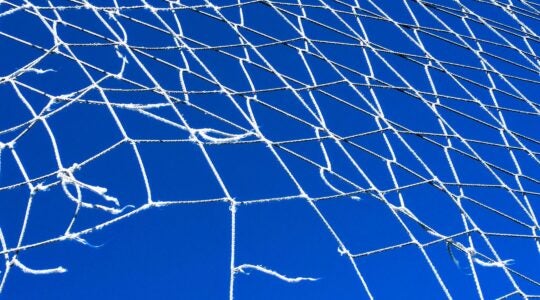Dec. 7, the anniversary of the Japanese attack on Pearl Harbor, lives in infamy. But Dec. 6, 1987 lives on, now having as glorious an afterlife as any of us could have imagined back on that bitterly cold day Sunday afternoon when 250,000 of us, from across the American continent, gathered in Washington, D.C., to rally and demand freedom for Soviet Jewry.
The largest Jewish gathering in American history took place on the eve of a summit meeting between President Ronald Reagan, the leader of what was then still called “the free world,” and Soviet Premier Mikhail Gorbachev, leader of “the evil empire,” as Reagan so defiantly called it. Evil it was in our eyes and those of Soviet Jews, denied the rights to emigrate or to educate, a deadly combination leading to a slow cultural death.
Today, with the Soviet Union long gone, and with more than a million ex-Soviet Jews now settled in and contributing so much to Israeli and American life, what is being remembered, far more than the dramatic politics of the moment, is the memory of how our community was so unified and energized. We were freeing not only Soviet Jewry but also an American Jewry still feeling the guilt of not having done enough to speak out for our brothers and sisters in Europe during the Shoah..
A new generation of American Jews was determined that the spiritual genocide behind the Iron Curtain would be met by an American Jewish roar, not the reticence of the 1940s.
Dec. 6 was something of a Jewish Woodstock, where the “ingathering of the tribes” was so massive, unexpected and magical that we, the people in the crowd, ultimately became a bigger story than the music and the impassioned speakers on stage. The story was that so many Jews could be energized enough to come together from across the country on behalf of Jews we didn’t know and hadn’t seen, other than the few, such as Natan Sharansky, who had been freed after spending almost a decade in the Gulag for the “crime” of seeking to emigrate. We were Jews coming together for other Jews, as simple and as profound as that.
No one imagined that Dec. 6 would be not just a peak, but an end. After all, the Solidarity Sunday rallies for Soviet Jews had been annually attracting more than 100,000 Jews in New York alone. Who knew that Jewish activism was sliding into ennui? Today during times of war, captives, exploding buses, boycotts and 10,000 rockets against Israel — Jewish rallies are no longer national or significant, a crowd of 3,000 is considered impressive. And those crowds are often reliant on mandatory attendance for day school students, all the more ironic, considering that American Soviet Jewry movement was ignited by volunteer students — the Student Struggle for Soviet Jewry, led by Jacob Birnbaum in the early 1960s — with rallies often infused with biblical imagery that lent poetry and an ethereal power to the prose of politics.
What puzzles Sharansky, Birnbaum, Nobel Peace Laureate Elie Wiesel and other leaders of the movement is why this remarkable success story is largely unknown by a younger generation. In an effort to address that fact and commemorate the 25th anniversary of that December day, to educate and reawaken that wondrous era of Jewish activism, a multi-partnered organization, Freedom 25 (http://freedom25.net), has become the online address for how we can bring the lessons and the inspiration of the Soviet Jewry movement into our communities and curriculum. In its way, Freedom 25 is about saving American Jewry, reminding us of our finest hour.
The New York Jewish Week brings you the stories behind the headlines, keeping you connected to Jewish life in New York. Help sustain the reporting you trust by donating today.




